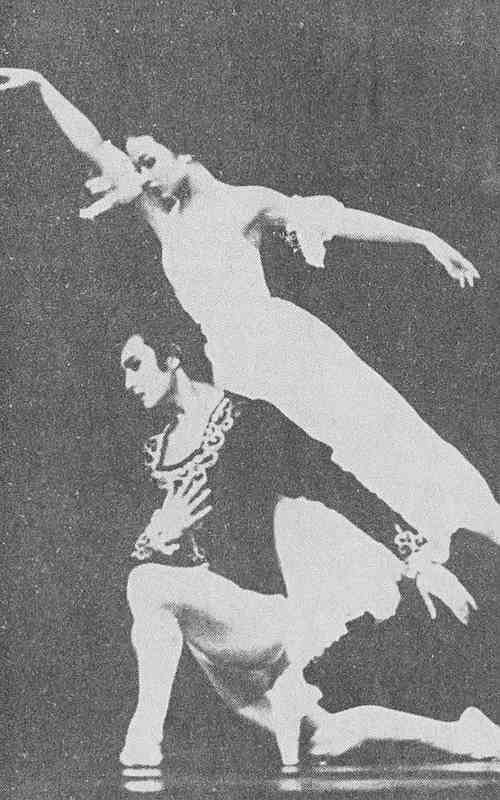|
 |
|
Wang Qifeng (above) and Wang Coijun in Giselle |
Five Chinese ballet dancers won awards at the Fourth Osaka International Ballet Contest held in Japan in October 1984. It is a mark of the progress young Chinese dancers have made in classical ballet.
Yang Xinghua won the individual performance prize for men and Li Keyu won the top award for costume design. Two pairs of dancers won awards in the pas de deux division: Zhang Weiqiang and Tang Min won second place, while Guo Peihui and Zhao Minghua placed fourth. All three Chinese pairs entered in the competition were among the 12 couples in the finals. In all, 33 pairs from 19 countries were entered.
A British ballet critic who has been involved in the dance world for almost 50 years praised the Chinese dancers' performances as both romantic and classical. He found their technique to be excellent.
A month later another two Chinese dancers, Wang Qifeng of Shanghai and Wang Caijun of Beijing, were awarded special prizes at the First Paris Ballet Competition. In 1980 Wang Qifeng had won a prize for China at an international contest for the first time.
China began to train its own ballet dancers in 1954, when the Beijing Dance School was set up. It became the Beijing Dance College in 1978. First generations of ballet dancers. teachers and choreographers trained by dancers from Moscow and Leningrad danced Precaution Inutile and Swan Lake. Later the Central Ballet Troupe was established from the Experimental Ballet Troupe, set up in 1959. Several famous works were performed including, Pirate, Giselle, Notre Dame de Paris, Les Sylphides and Sylvia.
In order to meet popular demand. Chinese ballet began to reflect the people's lives beginning in 1964. More than 10 full-length ballets were developed.
The Red Detachment of Women is about a farm girl who joins the revolutionary troops to overthrow the local landlord and reactionaries. No other Chinese ballet can match its demanding but graceful choreography.
Mermaid retells an old legend using a series of solo dances, pas de deux and ensemble dances.
New Year's Sacrifice is adapted from a modern story written by Lu Xun. It depicts the miserable life of a woman.
Lin Diayu is named after a sentimental girl from the classical novel A Dream of Red Mansions.
The choreography in these ballets incorporates movements and poses from traditional Chinese dance. Chinese dancers are trained in various dance styles, including folk traditions.
In the beginning, choreographers, directors and dancers were sent to the countryside to learn the styles and skills of folk dances. This supplemented their formal trainings based on the Russian style.
In recent years Chinese dancers have turned their attention to the Western countries, under the guidance of the open door policy. They are searching for a training system suited to Chinese dancers.
There are now three ballet companies in China: in Beijing, Shanghai and Shenyang. The Central Ballet Troupe in Beijing has the strongest group of dancers. Of its 350 members, 100 dance, 80 make up the orchestra, 30 are stage hands and the rest are choreographers, directors, composers, artists and theoreticians. In addition to performing in cities, the dancers often tour other parts of China with a small group of about 30 artists. | 